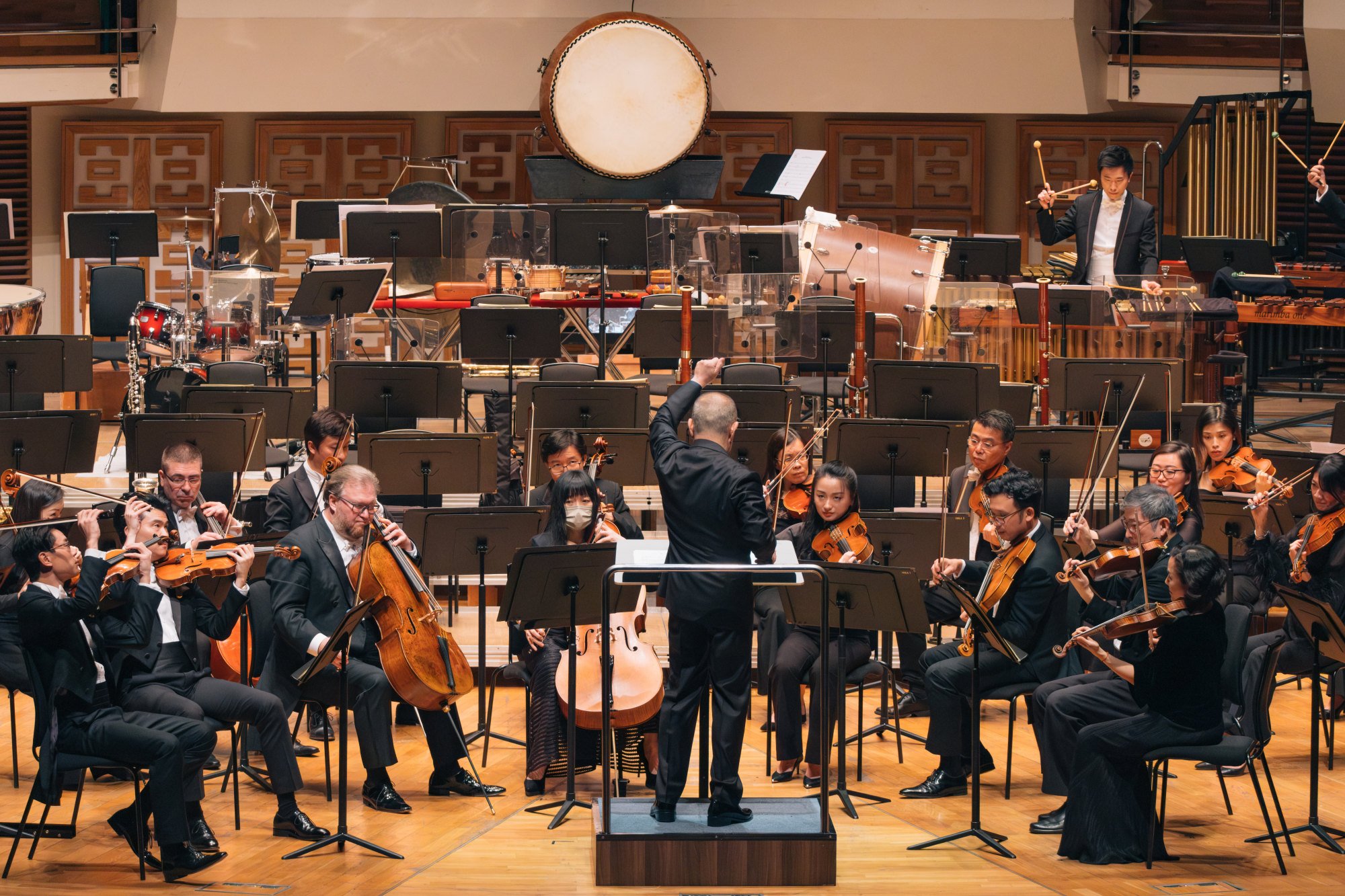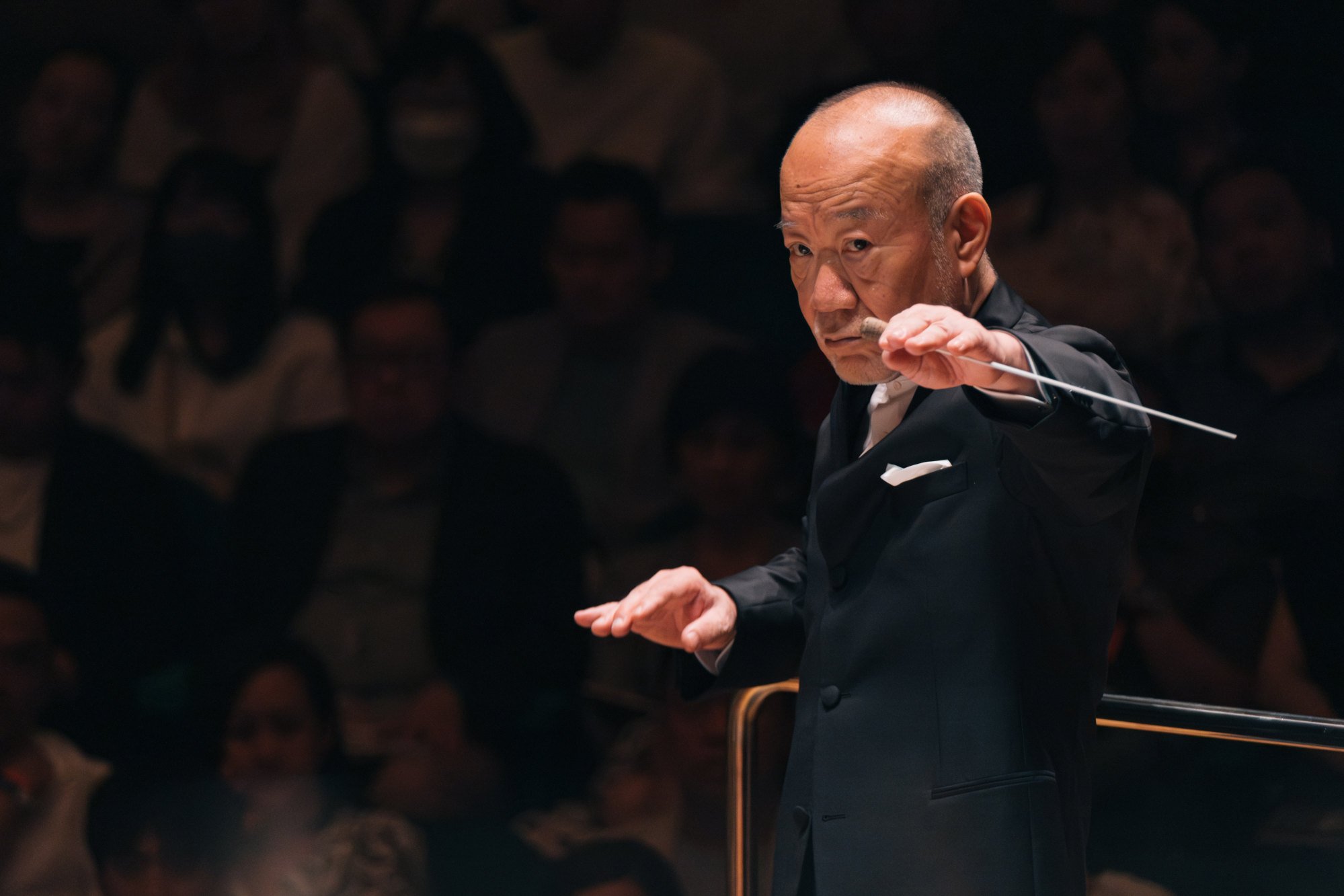
Review | Studio Ghibli composer Joe Hisaishi’s Hong Kong Philharmonic Orchestra concerts a delightful combination of flair and fantasy
- Hisaishi led a triptych of Hong Kong premieres from the podium himself, including Ponyo and Princess Mononoke Symphonic Suite based on Studio Ghibli movies
- The orchestra generally conquered the musical challenges with aplomb, though Ponyo seemed somewhat under-rehearsed and jarred with the rest of the programme
It is not uncommon for composers to re-orchestrate earlier works to be featured in larger multi-movement pieces, or extract highlights from lengthier pieces to form symphonic suites.
Both adapted forms were on display in the Hong Kong Philharmonic Orchestra’s sold-out Joe Hisaishi concerts, with the Japanese composer, best known for writing soundtracks for Studio Ghibli movies, leading a triptych of Hong Kong premieres from the podium himself.
In the opening Symphony No. 2, each of the three movements emanated from diverse sources but shared a similar theme-and-variation structure. This subtle approach provided an overarching cohesion while showing Hisaishi’s signature minimalist style.
The symphony contained simplistic material purposefully ripe for development, with the composer largely relying on shifting the parameters of rhythm, texture and expressive techniques to achieve variation.

By more obviously addressing the articulation markings in moments of fanfare, the woodwinds were more successful than the strings in revealing slight mutations in the repetition of flourishes.
The interplay between the first horn and the alto flute was noteworthy, offering great contrast to earlier percussive freneticism.
To initiate the third movement, Hisaishi dispensed with the baton and instead used his hands to exude a warm and flowing unfolding of the material.
Here, the deliberate reconfiguration of the seating – some strings and percussion appeared in a mirrored position from standard practice – lent greater clarity to the symphony’s structure.
Hisaishi further showed that an entire movement can be constructed from the simplest foundation through inventive interplay, and provided a sense of equity by never really highlighting one section of the orchestra or individual.
What was therefore required of the audience was sustained and active listening to fully appreciate the work’s subtleties.

Hisaishi’s conducting style is deliberate and precise. The orchestra generally responded well to the crispness of the timekeeper, but the strings were a little sloppy towards the end of the second movement, not always showing synchronicity.
The music that we more readily associate with Hisaishi was offered in abundance in Woman, a 2019 suite that included a piece based on the score for Studio Ghibli’s Ponyo, a 2008 film written and directed by Hayao Miyazaki.
The pared-down orchestra delivered lyrical lines and at times the music conjured up a fantasy world due to the somewhat unorthodox instrumental combination.
The work bore all the hallmarks of incidental music, but its function was never made clear, nor was the connection to its title. More broadly, it seemed out of place on two levels: the performance was somewhat under-rehearsed, and the pop-like chord progressions jarred with the rest of the programme.
Local soprano Louise Kwong had a small but significant role in Princess Mononoke Symphonic Suite, lending her purity of tone in this 2021 adaptation of the film score from the 1997 film also by Miyazaki and helping provide context to those unfamiliar with the director’s vision.
Her projection in her lower register did not always fully carry, but her delivery was theatrical and poised.

Musically, the work was Hollywood-influenced romanticism, combined with Japanese-infused melodic lines and complex rhythmic play. The orchestra had its challenges, particularly with the Stravinsky-esque, Rite of Spring-like passages, but it conquered the complexities with aplomb.
Hisaishi was greeted with rapturous applause and accommodated with two encores, the second of which was a piece called World Dreams. It was a fitting conclusion, for Hisaishi has cultivated a global market for escapist material and will long be remembered as a leader in this field.
“Joe Hisaishi in Concert”, Hong Kong Philharmonic Orchestra, Hong Kong Cultural Centre, Concert Hall. Reviewed: June 23, 8pm.
